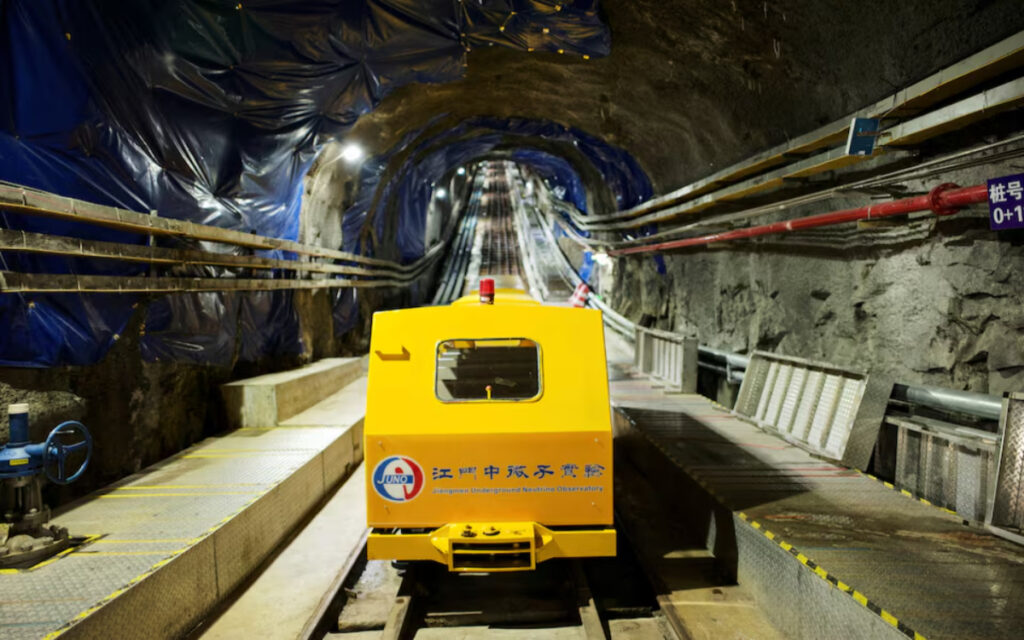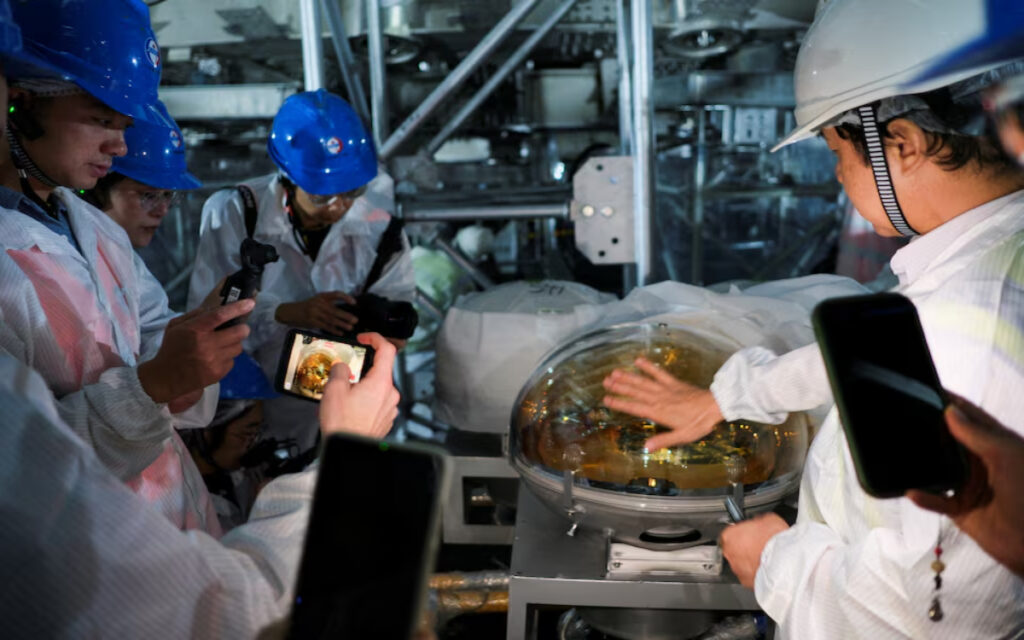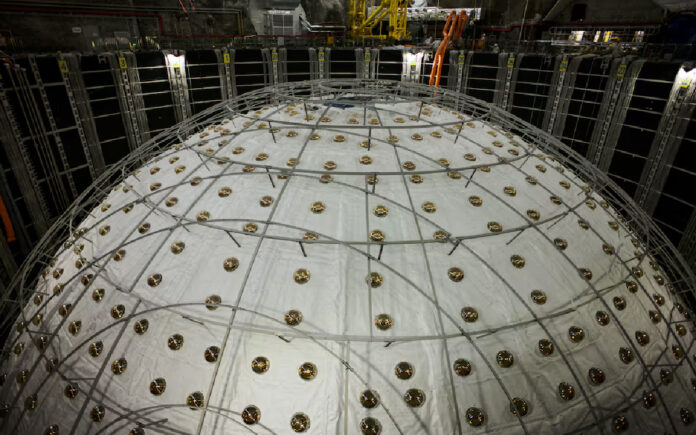Kaiping, China: Deep beneath China’s southern Guangdong province, an underground laboratory is on the verge of unlocking new secrets of the universe. At a depth of 700 meters (2,300 feet), the Jiangmen Underground Neutrino Observatory (JUNO) features a massive spherical detector fitted with thousands of light-detecting tubes, soon to be encased in a 12-story water pool. This ambitious project aims to provide groundbreaking insights into elusive subatomic particles called neutrinos.
After years of construction, the $300 million facility will start collecting data in the coming months. Physicists in China, along with scientists from around the world, are eager to understand the nature of neutrinos, which are produced during nuclear reactions. These particles pass through matter—trillions of them passing through the human body every second. One of the greatest mysteries in particle physics is how these particles can change forms, and determining their mass hierarchy (which are heavier or lighter) could unravel vital clues about the early universe and the nature of matter itself.

Gathering Data from Nuclear Power Plants and Beyond
JUNO will analyze neutrinos from two nearby nuclear power plants for up to six years, offering scientists unprecedented data. It will also detect neutrinos from the Sun, providing a real-time view of solar activity. Additionally, the observatory could study neutrinos produced by the radioactive decay of uranium and thorium within Earth, potentially enhancing our understanding of the processes that drive tectonic plate movements.
Expected to go operational in late 2025, JUNO will surpass the capabilities of the Deep Underground Neutrino Experiment (DUNE) being built in the United States, which won’t be completed until around 2030. However, DUNE’s construction has faced significant delays and budget overruns, with costs surging past $3 billion.

U.S. Cuts and Global Collaboration
The race to solve the neutrino mystery gained momentum when the U.S. Department of Energy (DOE) ceased funding U.S. institutions collaborating on JUNO in favor of focusing on DUNE. This decision, made during a period of escalating Sino-U.S. tensions, ended cooperation that had previously been in place.
“China had supported Fermilab’s LBNF (Long-Baseline Neutrino Facility) at the time, but later the cooperation could not continue,” said Wang Yifang, JUNO’s chief scientist and project manager. He added, “Around 2018-2019, the U.S. DOE asked all national laboratories not to cooperate with China, so Fermilab was forced to stop working with us.”
The DOE did not comment on this decision. As political friction between the U.S. and China has grown, including a trade war and restrictions on technology sharing, scientific collaboration has suffered. The lapse of a 1979 science and technology cooperation pact between the two countries in August only deepened the divide.
Despite this, international cooperation on JUNO remains strong. Institutions from countries like France, Germany, Italy, Russia, and even the U.S., as well as Taiwan, are all involved in the project. Wang remains confident that JUNO will lead the race in neutrino research, stating, “The one in the U.S. will be six years behind us. And the ones in France and Japan will be two or three years later than us. So we believe we can get the result of mass hierarchy (of neutrinos) ahead of everybody.”
Also Read | Australia’s Planned Social Media Ban Raises Concerns of Teen Isolation
The Potential of Neutrinos and Global Science
While real-world applications of neutrinos are still far off, some scientists have speculated about their potential for long-distance communication, as they can pass through solid matter, such as the Earth, at nearly the speed of light.
Though political tensions exist, scientists working on JUNO strive to stay focused on their research. U.S. involvement has not completely ceased, with one American group, backed by the National Science Foundation, recently renewing funding for its role in the collaboration. “Despite any political differences, I believe that through our collaboration on this scientific endeavor, we are setting a positive example that may contribute, even in a small way, to bringing our countries closer together,” said J. Pedro Ochoa-Ricoux from the University of California, Irvine.
Also Read | Goodbye Android, Hello HarmonyOS: Huawei’s Latest Smartphones Transition to New OS
Ensuring Data Integrity
One of the key challenges of the project is ensuring the integrity of the data. JUNO’s 600-metric ton spherical detector will log the passage of neutrinos from nearby power stations, transmitting the data electronically to Beijing. The data will also be sent to collaborating institutions in Russia, France, and Italy.
“We have a protocol to make sure that no data is missing,” said Cao Jun, JUNO’s deputy manager. To ensure accuracy, at least two independent teams will conduct analyses of critical data points and cross-check their findings. “When these two groups get a consistent result, we can publish it,” he added.
Wang Yifang, who is also the director of the Institute of High Energy Physics, the Chinese counterpart of Fermilab, remains optimistic about collaboration with the U.S. and other international partners. “We welcome the Americans,” he said.



